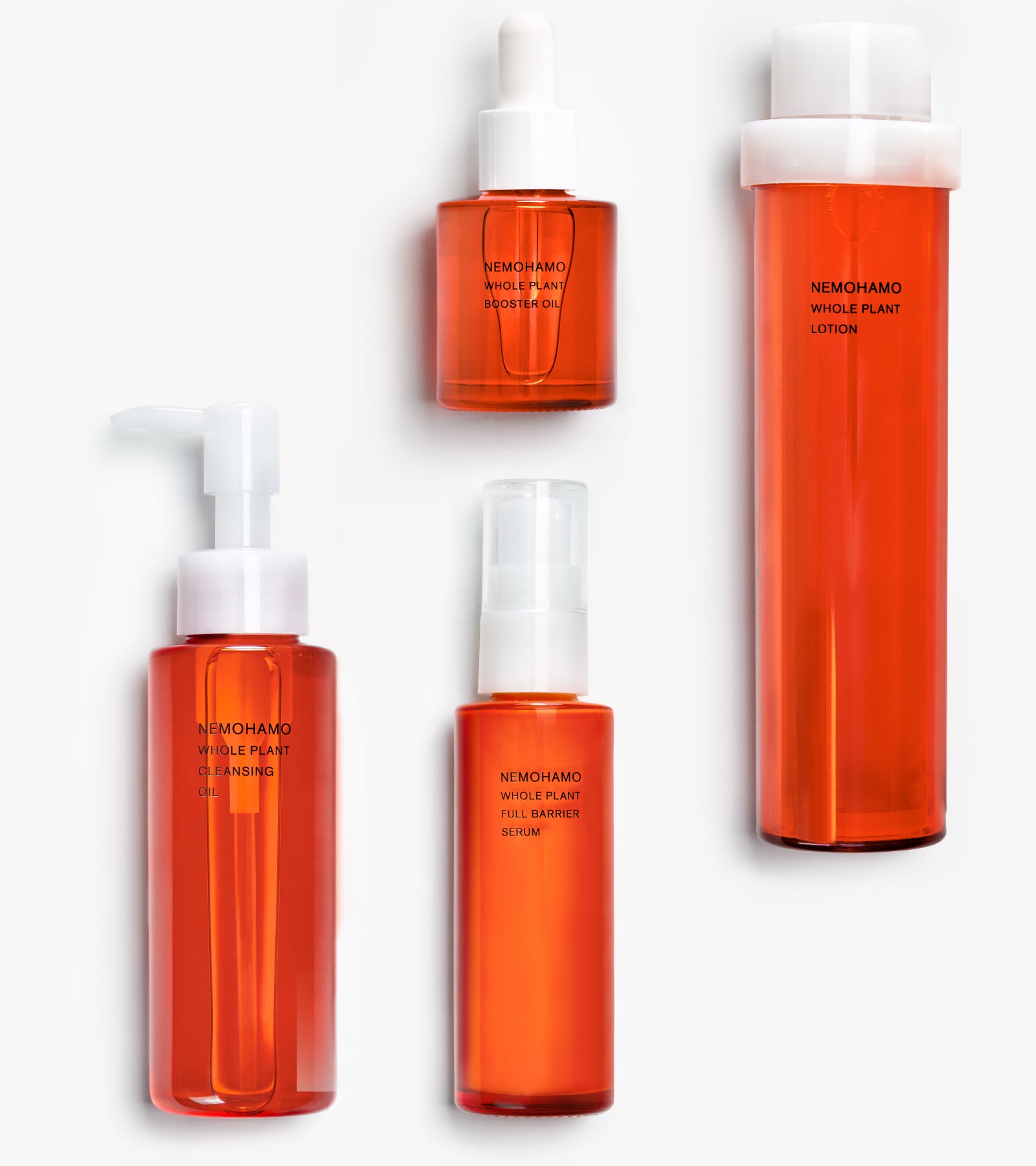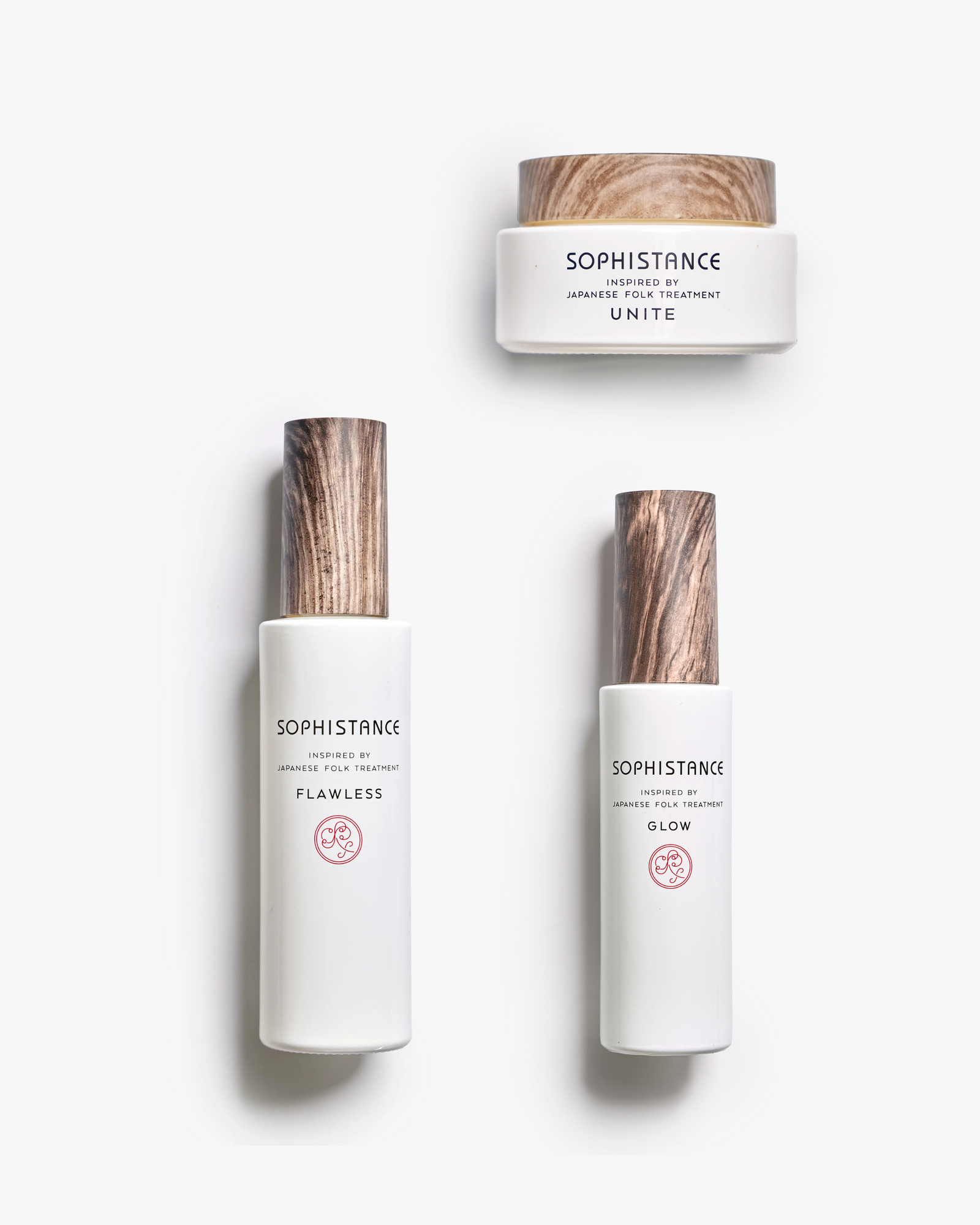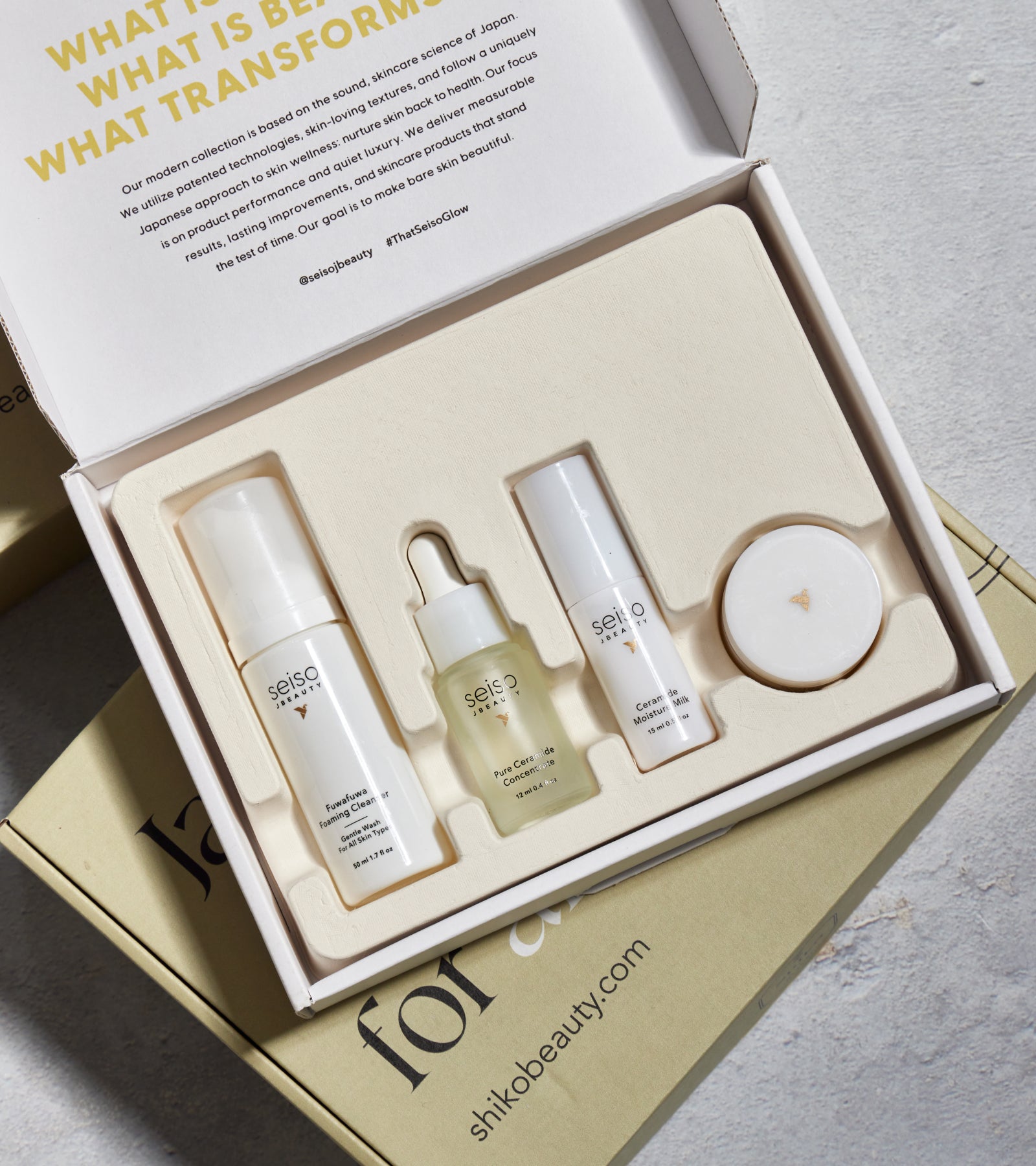Updated: July 2025
Age is an inevitable part of life. At Shikō Beauty, we embrace aging as a natural part of your skin's journey, and our products are designed to help your skin age gracefully. Japanese skin care products offer a holistic approach to nurturing your skin’s youthful radiance while also providing protection from environmental toxins and other products that can cause premature signs of aging.
While we all expect our skin to change over time, harsh chemicals or abrasive cleaning methods can damage the skin’s protective outer layer, leaving it stressed and vulnerable to wear. While all of our J-beauty skin care products are designed to nurture your skin’s health from the inside out, in this blog post, we take a look at our top 5 Japanese anti-aging creams for 2025 to help you get your new year off to a fresh and radiant new start.
What Causes Aging Skin?
Our skin undergoes numerous changes throughout our 20s and 30s, from the structural layer to the surface.
Underneath the surface, collagen and elastin are the elastic tissues that support our skin. As we age, the levels of collagen and elastin begin to decrease, along with a decrease in the fat beneath our skin. This can cause skin to sag and sink, especially as fat deposits shift to the lower part of the face.
Aging Skin and Skin Cell Turnover
On the surface, aging skin begins to thin, becoming more prone to bruising and blemishes. Most importantly, our skin cell turnover cycle lengthens. In young children, the skin turnover cycle, during which the body sheds and creates a new layer of skin, lasts only 3-5 days. By the time we reach our 20s, this process typically takes around 28 days. After that, skin cell turnover can lengthen to up to 90 days or more!
When skin cell turnover slows down, old or dead skin cells remain on the surface for longer periods. This can lead to dull, dry-looking skin. Our pores can also become clogged by the accumulation of dead skin cells, leading to blemishes or acne.
Causes of Fine Lines and Aging
Fine lines tend to appear around our eyes first, as skin is thinner there. They may also begin to form around the mouth, where the skin is prone to dryness. Thinning skin and dry skin can both contribute to the appearance of fine lines, particularly when combined with sun exposure.
Wrinkles typically begin to form as collagen and elastin levels decline during the aging process. Wrinkles will also form along the lines where we repeatedly use facial muscles, such as smile lines around the mouth or vertical frown lines between the eyes.
J Beauty and Respect for the Aging Process
All skincare and cosmetic products that are sold in Japan must meet strict ingredient and marketing guidelines. As such, J Beauty products focus on taking care of your skin and helping to treat skin problems associated with aging, rather than simply trying to mask fine lines and wrinkles. And while the slowing of skin cell turnover as we age cannot be prevented, there are numerous ways to treat and nurture our skin as it ages, revealing healthy, youthful-looking skin.
What Is the Best Anti-Aging Secret?
A J-Beauty routine always starts with double cleansing, and this step is even more critical as we care for aging skin. Double cleansing is the most effective way to remove dead skin cells, as well as dirt and pollution that may accumulate on the skin's surface during the day. Using the proper cleanser can help aging skin look brighter and promote faster skin cell turnover.
The other great enemy of aging skin is dryness, so using a rich and potent moisturizer is another crucial step in caring for aging skin. Dryness leads to the formation of fine lines and wrinkles, so nourishing your skin with a healthy dose of moisture and hydration can help prevent the formation of those lines before they begin.
What Do the Japanese Use for Anti-Aging?
There are several key ingredients to consider when selecting an anti-aging skincare product. Most of these will stimulate the production of collagen in the skin, resulting in plumper, more youthful-looking skin. These include:
-
Vitamin A: Retinoids promote skin cell turnover and stimulate collagen production.
-
Peptides: These amino acids stimulate elastin and collagen production.
-
Vitamin C: Antioxidants stop free radicals that can break down collagen in the skin.
-
Hyaluronic Acid/Ceramides: Hydrate your skin and lock in moisture.
Top 5 Japanese Anti-Aging Creams in 2025
Top Japanese Anti-Aging Collections for 2025
If you’re looking for a full Japanese anti-aging skincare line for 2025, look no further than our top anti-aging skincare collections:

This complete plant-powered ritual from NEMOHAMO features organically grown ginseng root, fermented extracts, and antioxidant-rich botanicals to target signs of aging at every step. The set includes a cleansing oil, lotion, serum, cream, and gel, each formulated with 100% plant-based ingredients grown without the use of pesticides. Designed to support skin regeneration and boost resilience, this full routine deeply hydrates, improves elasticity, and restores radiance. Ideal for anyone seeking a holistic, skin-loving approach to aging gracefully.

A comprehensive skincare system designed to restore and strengthen the skin’s natural barrier, this set includes key microbiome-supporting products: GLOW Microbiome Anti-Aging Milk, INTENSIVE Microbiome Retinol Anti-Aging Eye Cream, and a barrier-boosting facial wash and serum. Ideal for sensitive, dry, or aging skin, this routine helps calm irritation, improve texture, and lock in moisture while protecting against environmental stressors. With consistent use, the skin appears firmer, smoother, and more balanced from within.

Experience Seiso JBeauty's revolutionary collection of ultra-hydrating, restorative formulas in one convenient travel set. This set contains:
- Fuwafuwa Foaming Cleanser
- Pure Ceramide Concentrate
- Water Velvet Cream
- Ceramide Moisture Milk
Fuwafuwa foaming cleanser gently cleanses and softens the skin without water, leaving behind a protective layer that helps trap moisture before being rinsed off. Follow up with just 3-5 drops of their potent ceramide concentrate, and a few pumps of Seiso’s Ceramide Moisture Milk to help improve the skin barrier’s health, while diminishing wrinkles and leaving skin dewy and refreshed.
Finish off with the Water Velvet cream to lock in moisture and improve skin elasticity.
Frequently Asked Questions About Japanese Anti-Aging Creams
As Japanese skincare continues to gain global popularity, customers often ask a few common questions about the benefits of Japanese anti-aging products compared to those on the market.
Here are some of the most frequently asked questions:
What’s the difference between Japanese anti-aging creams and U.S. anti-aging creams?
Japanese anti-aging creams place a strong emphasis on natural ingredients, minimalist formulations, and traditional beauty rituals that have been practiced for centuries. These products often feature extracts like green tea, rice bran, and seaweed, which are known for their anti-inflammatory and antioxidant properties.
On the other hand, U.S. anti-aging creams often emphasize advanced scientific innovations, incorporating more synthetic ingredients such as retinoids, peptides, and hyaluronic acid. Both have their strengths—Japanese creams offer a more holistic, gentle approach that is suitable for sensitive skin types. At the same time, U.S. products may deliver faster results by targeting wrinkles and fine lines more aggressively.
Are Japanese anti-aging creams good for sensitive skin?
Yes! One of the hallmarks of Japanese skincare is its emphasis on gentle, skin-friendly formulas. Many Japanese anti-aging creams utilize natural, plant-based ingredients and steer clear of harsh chemicals that can irritate sensitive skin. They also often focus on hydration, a key component of anti-aging that suits even the most delicate skin types.
What are the key ingredients in Japanese anti-aging creams?
Some common ingredients you’ll find in Japanese anti-aging products include:
- Rice Bran: Rich in antioxidants and vitamins, it helps to smooth fine lines and wrinkles while promoting a bright, even skin tone.
- Green Tea: Renowned for its anti-inflammatory and antioxidant properties, green tea can help protect the skin from free radical damage and alleviate irritation.
- Collagen: Many Japanese anti-aging creams contain collagen to support skin elasticity and firmness, which naturally decreases with age.
- Seaweed Extract: Another key ingredient is seaweed, which helps hydrate and repair the skin barrier, resulting in a plumper, more youthful appearance.
How long does it take to see results with Japanese anti-aging creams?
Results may vary depending on the product and individual skin type. Japanese anti-aging creams prioritize gradual improvement and skin health over quick fixes, so you can expect noticeable changes within a few weeks to a couple of months of consistent use.
Comparing Japanese and U.S. Anti-Aging Brands
When it comes to anti-aging products, consumers often ask: What are the main differences between Japanese and U.S. anti-aging creams?
Japanese and U.S. skincare brands each have distinct approaches to anti-aging. While Japanese brands focus on holistic, long-term skin health, U.S. brands may prioritize cutting-edge ingredients and faster results. Here's a quick breakdown of their key differences:
- Ingredients: Japanese brands often favor traditional, natural ingredients such as fermented rice, soy, and botanical extracts. U.S. brands usually emphasize retinoids, vitamin C, and peptides, which have been shown to have anti-aging effects in clinical studies.
- Formulation: Japanese anti-aging creams typically feature lightweight, hydrating formulas that absorb easily into the skin, making them ideal for layering with other skincare products. U.S. anti-aging creams may feature richer textures designed for deeper penetration into the skin layers, targeting wrinkles and age spots.
- Philosophy: Japanese skincare is rooted in prevention, focusing on nurturing the skin’s natural barrier and hydration levels. U.S. skincare, on the other hand, often addresses more visible signs of aging, such as wrinkles and dark spots, with stronger, more concentrated formulas.
Ultimately, the choice between Japanese and U.S. anti-aging creams depends on individual skin concerns and preferences. Japanese creams are best suited for those seeking a gentler, preventative routine, while U.S. brands may better serve individuals looking for faster, more dramatic results.
Start your new year off right with any of our carefully selected Japanese Anti-Aging Creams, and make 2025 your skin’s most radiant and youthful year yet.





